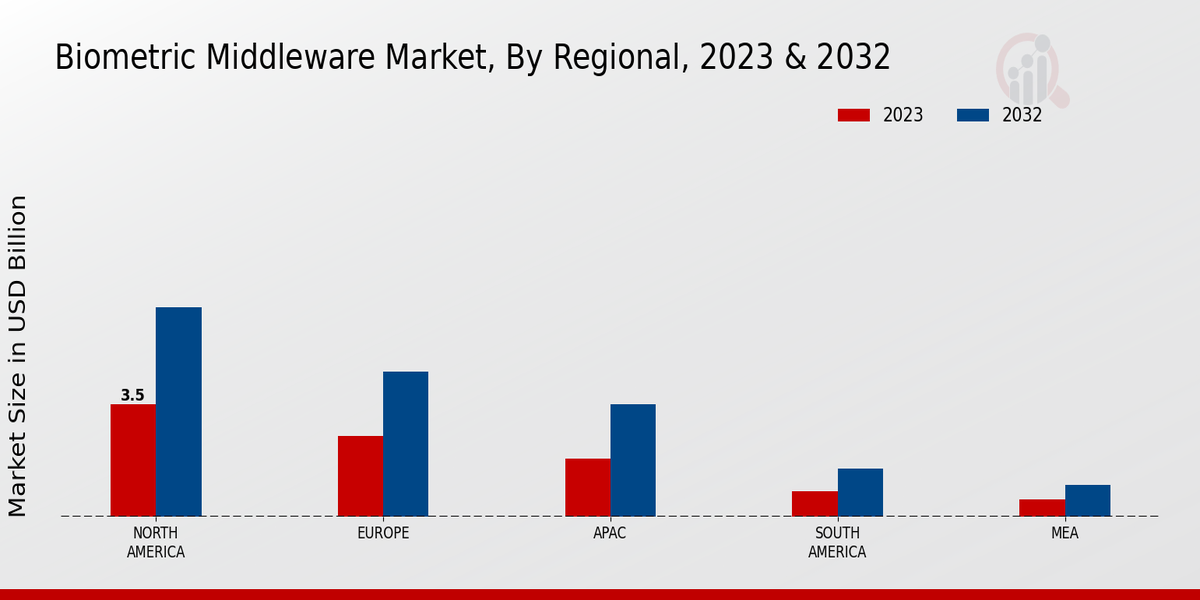The Biometric Middleware Market is a rapidly evolving sector characterized by the integration of advanced technology solutions that enhance the functionality and interoperability of biometric systems. This market encompasses a broad range of applications that utilize biometric authentication methods such as fingerprint, facial recognition, iris scanning, and voice recognition. As organizations increasingly focus on security and user verification, the demand for middleware solutions that can manage and streamline biometric operations across various platforms has significantly risen.
Key industry players are competing by developing innovative software that offers scalability, ease of integration, and support for various biometric modalities, thereby enhancing the overall user experience and security architecture of businesses worldwide.IDEMIA stands out as a notable competitor in the Biometric Middleware Market, leveraging its extensive expertise in identity verification and biometrics. The company is recognized for its robust middleware products that support various biometric technologies, which enhance user authentication processes across diverse sectors, including financial services, public safety, and immigration control.
IDEMIA's strong commitment to innovation allows it to provide scalable solutions that can seamlessly integrate with existing IT infrastructures. The company's focus on providing high-accuracy and high-speed solutions enhances the user experience, thereby solidifying its position in the market. Furthermore, IDEMIA's global presence and strategic partnerships also amplify its capacity to cater to clients with tailored solutions that meet the increasing demands for security and identity management.HID Global has established itself as a significant player within the Biometric Middleware Market, leveraging its established reputation in identity and access management solutions.
The company offers a range of biometric middleware products that emphasize security, interoperability, and ease of use. HID Global's solutions are designed to be integrated into a variety of applications, making them versatile for organizations looking to enhance their security frameworks. Additionally, HID Global's consistent investment in research and development enables it to stay ahead of market trends, ensuring that its middleware products evolve to meet the changing requirements of customers worldwide.
























